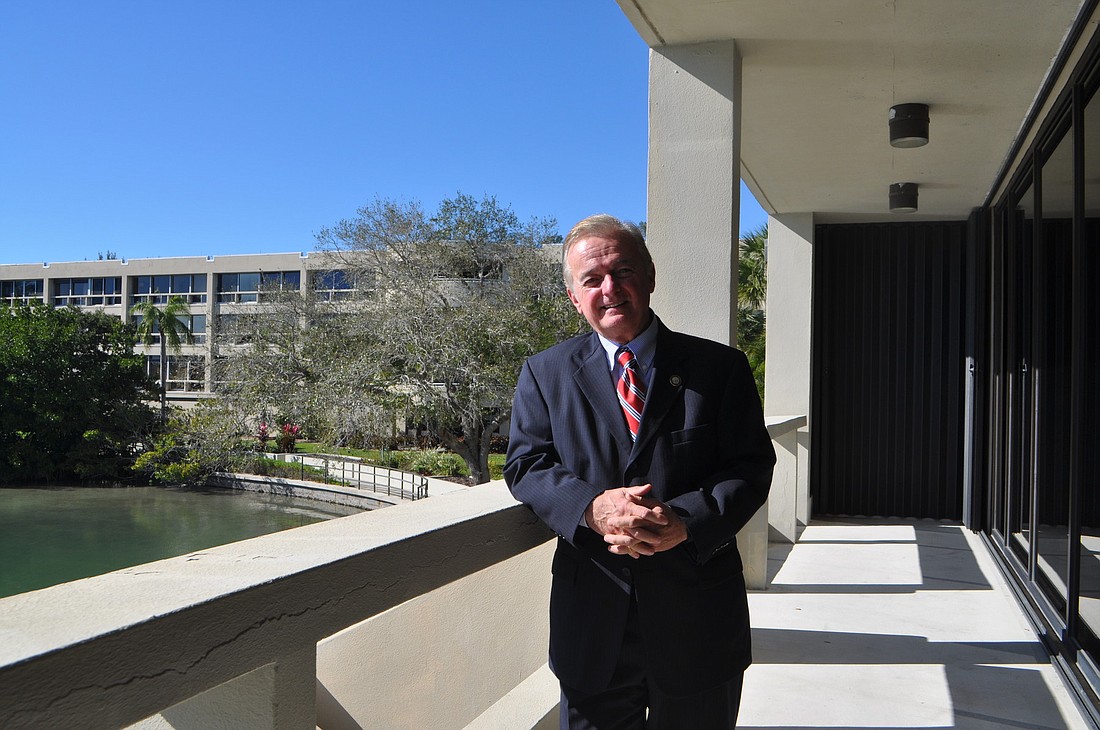- April 25, 2024
-
-
Loading

Loading

Plymouth Harbor is planning for a growth spurt.
By early 2017, the Sarasota Bay retirement community, located at 700 John Ringling Blvd., plans to build a new 150,000-square-foot building with three stories over parking in the property’s western-most parking area that’s adjacent to the Smith Care Center.
Plymouth Harbor is still finalizing the number of units it will seek, but it is currently planning approximately 70 new residences: 30 in a memory-care unit, 30 assisted-living units and 10 independent-living units.
The estimated cost of the project is $21 million to $25 million, which will be funded through both traditional bank financing and a bond.
The Sarasota City Development Review Committee will discuss the project during a Feb. 4 meeting, at Sarasota City Hall. DRC meetings are open to the public, but participation is limited to committee members unless a member requests information from an applicant.
Renderings for the project are not yet available, but Plymouth Harbor CEO Harry Hobson wants the design of the building to let residents know they’re at home.
“It will be very residential,” Hobson said. “We don’t want it at all to look like a health care facility.”
For a memory-care unit, architectural design is especially important.
“Research has shown that the right kind of lighting and moods stimulates certain senses,” Hobson said.
Adding assisted-living and memory-care residences will fulfill a need for individuals who can no longer reside in independent living units but do not yet need skilled, round-the-clock nursing care. Assisted -iving residents are typically individuals who need assistance with daily tasks, such as dressing or bathing. Memory-care residents may be physically healthy but need a protective environment.
“The unit will be secured, but it will offer residents the freedom to move throughout the unit,” Hobson said.
Plymouth Harbor has been planning the expansion for approximately three years.
During planning stages, the nonprofit conducted a demographic study to determine whether it was feasible to build another 60 residences.
“That study told us that there was enough age and income that we could easily add another 30% over the 60,” Hobson said.
The average age of entering Plymouth Harbor residents is between 77 and 78, but campuswide, the average age is 85 — which, according to Hobson, is roughly the average age nationwide at which individuals enter skilled nursing care.
“It will not only meet the need for today, but it will also meet the need for tomorrow,” Hobson said.
Plymouth Harbor was founded in 1966 and is a nonprofit continuing care retirement community. It has 206 independent-living units, 60 skilled nursing units and 10 assisted-living residences.
A positive approach
Although the facility’s opening is two years away, all Plymouth Harbor staffers are undergoing training to learn new approaches to caring for individuals with memory-related issues through a program called Positive Approach to Care.
Developed by Teepa Snow, a leading educator on dementia who hosted educational sessions for staffers, current and prospective residents and their partners and guests Jan. 28, at Plymouth Harbor, the approach focuses on the strengths that remain at each stage of memory loss. That program will be a model for care at the new memory-care unit.
It emphasizes the importance of connecting physically with individuals who have dementia. For example, rather than brushing a patient’s teeth for him caregivers would guide the patient’s hand so that the individual can brush his teeth with assistance. It also emphasizes the importance of communicating with gestures and motions.
“I think that there was a fallacy in the past to try to get them to adapt to our world,” said Plymouth Harbor CEO Harry Hobson. “This approach is about how can I best work with you, not focusing on your losses but on what you’ve retained.”
Demographic snapshot
The aging population in the Sarasota area creates a need for additional assisted living and memory care.
Percentage of population 85 years and older:
5.1% — Sarasota
11.0% — Longboat Key
1.9% — National average